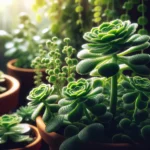Introduction to Senecio Kleiniiformis
Engage your senses and prepare to be charmed by the distinctive appearance of the Senecio Kleiniiformis, commonly known as the Spear Head succulent. With its plump, spear-shaped leaves, this unique plant captures the essence of an arid landscape, refined to perfection within its compact form. Native to the rocky crevices and dusty plains of South Africa, Senecio Kleiniiformis is more than just a pretty face; it’s a testament to the incredible resilience and adaptive strategies of succulents.
The allure surrounding the Spear Head succulent isn’t hard to grasp. It has perfectly adapted to thrive in environments where most would falter, conserving water with the tenacity of a desert nomad and basking in the sun’s fierce embrace. Its presence in any collection speaks volumes of the owner’s discerning taste, making it a coveted specimen among succulent enthusiasts and interior design aficionados alike.
Picture this hardy plant perched on a sunlit window sill, its silhouette a playful interplay of shadow and light, each leaf capturing a glint of sun. The Senecio Kleiniiformis not only enriches the visual palette of your living space but offers a slice of the wild, rugged beauty of the South African veld into your home.
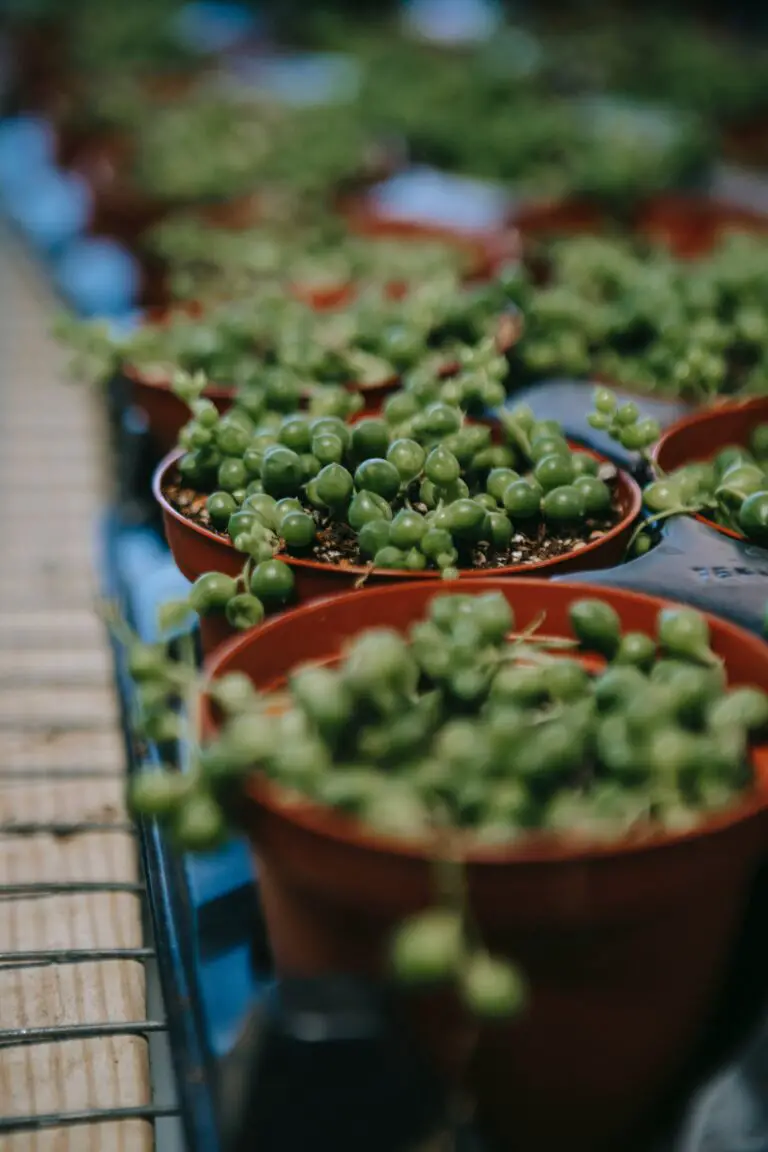
Physical Characteristics
Let’s zoom in on the charming qualities of Senecio Kleiniiformis, starting with its foliage. Picture this: succulent spearhead-shaped leaves, each one a unique masterpiece. The leaves, robust and fleshy, flaunt a palette of powdery blue-grey hues, making them a standout feature in any plant ensemble. It’s almost as if each leaf is coated in a fine silver dust, an armor that shields it from the harsh sun in its native habitat. And when the sunlight graces them, they have this soft glow that’s absolutely mesmerizing.
Moving to the stems, these are the backbone of this plant’s undulating dance with gravity. They rise and arc with a graceful strength, textured and tinted with the same silvery sheen as the leaves. Whether you have a collection that spans continents or you’re just venturing into the verdant world of succulents, those stems add a dynamic visual rhythm that’s hard to ignore.
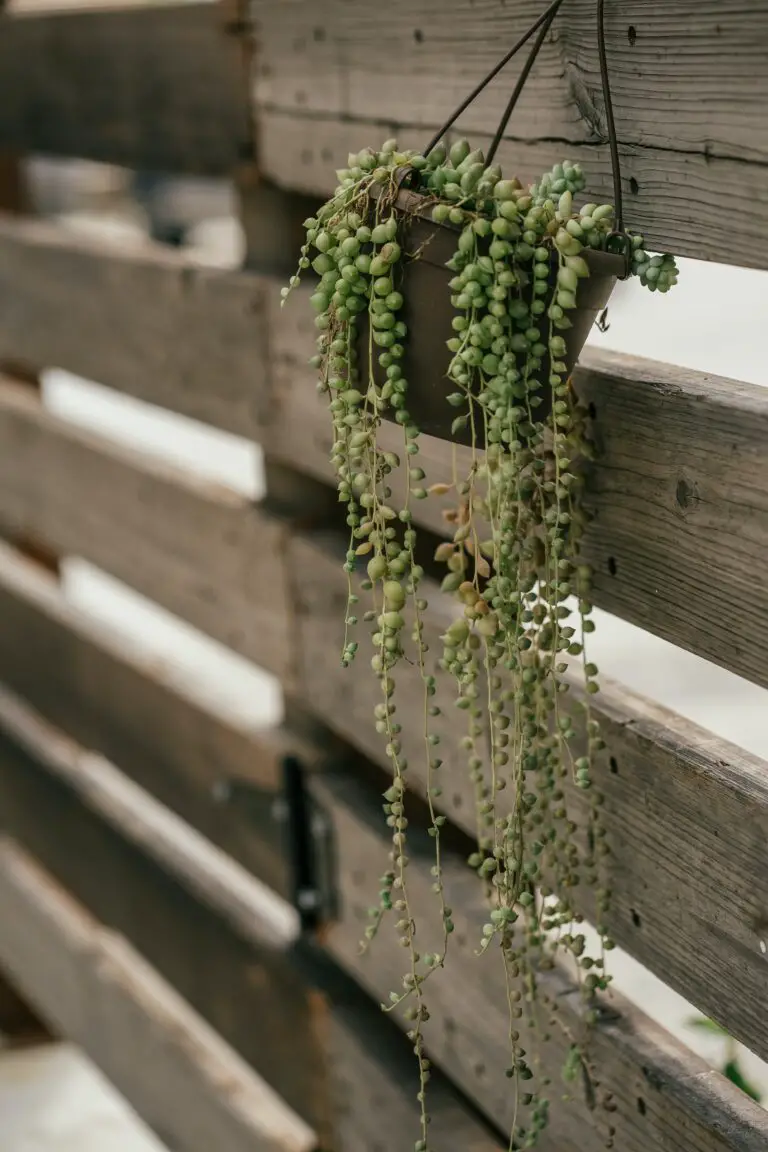
And then there are the flowers. Though not as prominent as the leaves and stems, they’re like tiny suns radiating a soft, pale yellow light. Early fall is when they decide to grace us with their presence, peeking out like little stars that hint at the coming change of seasons. They’re not just another pretty face either; these flowers carry the torch for future generations of Senecio Kleiniiformis, ensuring that the spectacle isn’t limited to just one season.
Without a doubt, it’s this unique combination of leaves, stems, and flowers that elevates Senecio Kleiniiformis to more than just green decor. It’s a living sculpture, endlessly adapting and growing, much like our own experiences with the natural world. If you’re eager to learn how to nurture this botanical gem, check out our comprehensive care guide and grow your green thumb alongside your green friends.
Optimal Growing Conditions
For every plant enthusiast out to cultivate a luscious piece of nature, understanding the unique needs of your green friend is crucial. And when it comes to Senecio Kleiniiformis, or the Spear Head succulent as it’s affectionately known, creating the right environment is the secret ingredient to its happy growth spurt. So, let’s dive into the world where these succulents thrive!
Let There Be Light! – Just like a morning person who relishes the sunrise, Senecio Kleiniiformis basks in bright, indirect sunlight. A spot near a south-facing window is the plant’s equivalent of a cozy nook, preferred for its gentle yet generous light. However, remember the midday sun is a touch too harsh for our Spear Head’s delicate leaves.
Keep It Cozy: – Temperature plays a pivotal role, too. These stoic succulents hail from warmer climates, so they feel right at home in temperatures ranging from 65°F to 75°F (18°C to 24°C). Picture an early May afternoon—warm but not sweltering—for the ideal temp.
Humidity: A Balancing Act
While humidity tends to be a lesser concern, it’s worth noting that environments resembling a dry, breezy day in the desert are what Senecio Kleiniiformis finds most comfortable. This doesn’t mean turning your home into the Sahara, but rather aiming for that sweet spot where the air isn’t heavy with moisture—a room just crisp enough to breathe in comfortably.
Weaving these care essentials into the fabric of your daily plant routine isn’t just rewarding; it’s a testament to how a bit of know-how goes a long way. And should you need guidance about the various succulent types that can complement your Spear Head succulent, check out our in-depth look at various succulent species.
Just a glance at a thriving Senecio Kleiniiformis is a glimpse into what optimal conditions can produce—think vibrant, plump leaves reaching skyward, a sight to behold! And to give you a visual teaser, here’s a glimpse of succulent serenity:

Remember, the journey to a thriving Spear Head succulent is one of awareness and adjustment. With the right light, temperature, and a knack for keeping humidity in check, you’re all set to cultivate a verdant symbol of resilience and beauty that’s uniquely Senecio Kleiniiformis.
Planting and Repotting Tips
When it comes to giving your Senecio Kleiniiformis, or Spear Head Succulent, a home that’s both comfy and stylish, you’re in for a treat! This isn’t just about sticking the plant into a pot and calling it a day; it’s about creating the perfect environment for these quirky succulents to thrive.
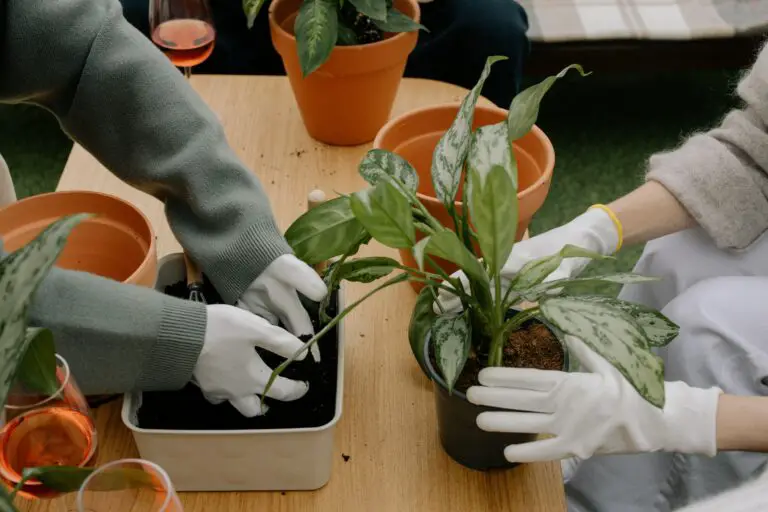
The Perfect Soil Mix
First things first, let’s talk dirt. Your Senecio Kleiniiformis is a bit like the Goldilocks of plants – it needs the soil just right. You want a mix that drains faster than gossip spreads, preventing water from throwing a pool party at your plant’s roots. Combine perlite, coarse sand, and a smidge of compost with a succulent soil base to hit the jackpot. I once watched a fellow gardener experiment with different mixtures, and let me tell you, once they found the magic blend, their Spear Head Succulents sprouted faster than a teenager’s growth spurt!
Choosing the Right Pot
Next up, the vessel for your verdant friend – the pot. A clay or terracotta pot with a drainage hole is like a breathable pair of sneakers for your plant; it’s essential for those roots that yearn to breathe free. The porous material wicks away moisture, waving goodbye to soggy soil. Imagine your plant trying on pots like Cinderella with her glass slipper, and when you find the one that fits just right, it’s a fairy-tale ending for real.
When should you repot, you ask? Keep an eye out for roots peeking through the drainage hole or a top-heavy plant that looks like it’s doing the Leaning Tower of Pisa impersonation. That’s your cue for a pot upgrade, preferably during the growing season when the plant is in its prime for a change.
Repotting Best Practices
And when it’s time to go from old pot to new, do it like you’re handling a priceless artifact. Carefully tease the roots out and let them bask in the open air for a day – kind of like a spa day for plants. When placing your succulent into its new abode, do so with the tenderness of a parent tucking in a child. A bit of a dramatic comparison, perhaps, but these succulents could use a touch of drama! Oh, and don’t water immediately after repotting. Give it a week to adjust, to avoid any root-shock-related melodrama.
Take these tips, plant lovers, and watch your Senecio Kleiniiformis stand tall, mimicking the spears of warriors in plant form. With the right soil, the perfect pot, and the gentle hands of a repotting maestro, your Spear Head Succulent will live its best life, stretching out its leaves like a cat in the sun.
Watering and Feeding
When you bring a lively Senecio Kleiniiformis into your life, you’re signing up for a green journey filled with twists and turns—literally, as its signature spear-shaped leaves add a dash of drama to any space. But to keep those succulent spears thrusting upwards and happy, a splash of H2O knowledge and a pinch of feeding finesse are essential!
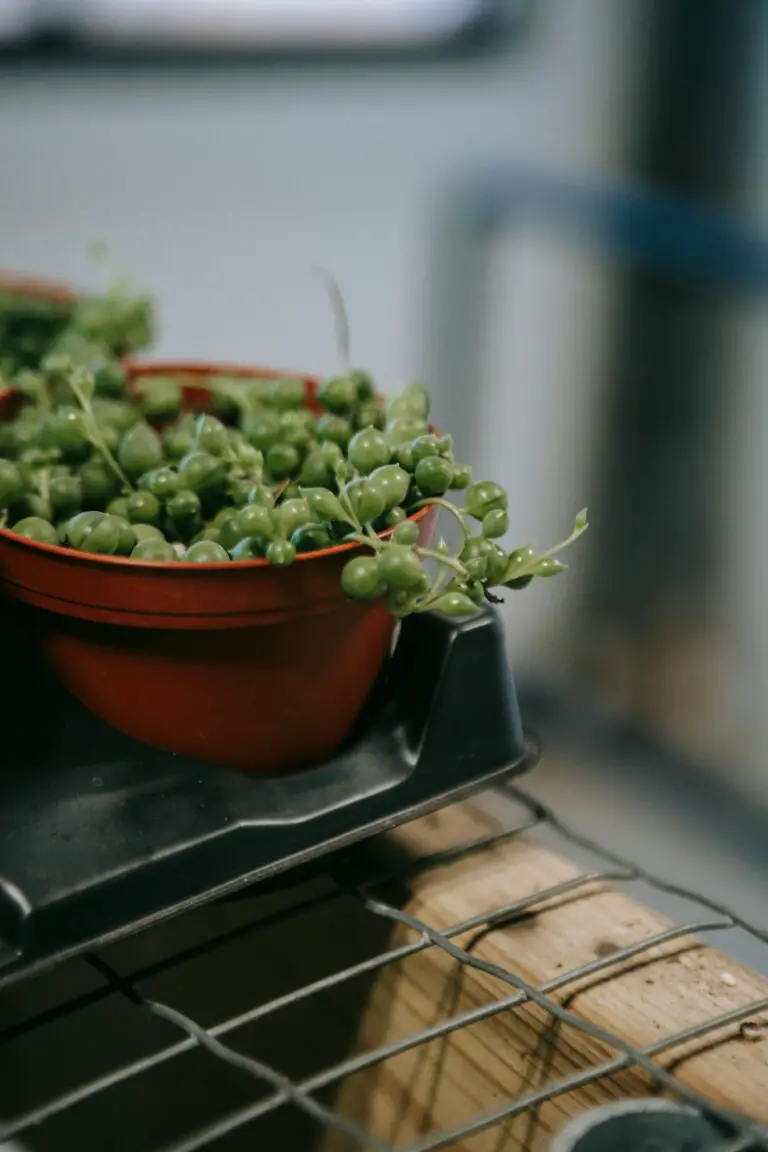
Imagine a downpour in its native arid homeland—the Senecio Kleiniiformis drinks up the rain like a champion, then kicks back to bask in a dry spell. That’s the rhythm we aim to replicate at home. Generously drench the soil when it’s as dry as a desert, typically every few weeks, but let’s not turn our succulent’s crib into a swamp. Overwater it, and you’re sending an invitation for root rot to join the party—definitely an unwanted guest.
Let’s talk about that special sauce that makes your Senecio Kleiniiformis go from “meh” to “marvelous” – the fertilizer. As spring whispers promises of new growth, it’s time to bolster your plant’s energy reserves with a balanced, dilute succulent fertilizer. A light feed every month during the growing season will have your spear head basking in its own glory—like it’s just won the plant version of an Olympic gold!
However, as autumn’s golden hues creep in, your succulent buddy prefers to relax, slow down its grow-palooza, and get ready for a winter snooze. This is the time to put the feeding routine on hold—like pausing your favorite show to savor the suspense.
Remember, getting the watering and feeding routine down pat is like hitting the perfect tempo in a catchy tune—it’ll make sure your Senecio Kleiniiformis keeps dancing to the rhythm of health and growth all year round!
Pruning and Maintenance
Welcome to the nitty-gritty of keeping your Senecio kleiniiformis—also affectionately known as the Spear Head—looking sharp! Imagine your succulent as a topiary of sorts, where precision snips lead to the perfect silhouette. It isn’t just about aesthetics, though. Pruning is a vital part of succulent care that rejuvenates and encourages desirable growth, and with the Spear Head, timing and technique are key.
Firstly, let’s talk about the ‘when’. The best time to prune your Senecio kleiniiformis is in the early spring, just as the plant wakes up from its winter slumber. This is when it’s about to enter a phase of vigorous growth, and he’s ready for a fresh start. It’s like a new year makeover—trimming away the old to make room for new excitement!
But how, you may wonder, do you wield your pruning shears to best empower your succulent? Well, that begins with sterilizing your tools—always. Nobody wants an infection, least of all our green companions. Then, snip away any dead or dying leaves at the base. If you spot a leggy stem—that’s a stem that’s stretched out, seeking the sun—a strategic cut just above a leaf node can encourage bushier growth. Don’t be shy; these resilient guys bounce back with vigor!
Regular maintenance is akin to a steady exercise routine for your Senecio kleiniiformis. Check in weekly for an inspection, wiping dusty leaves with a damp cloth. Not only does this keep your plant looking dapper, but it also enables those fleshy leaves to soak up the sun fully, free from the veil of dust.
Remember, every snip is a choice, a direction for growth, a boost for health, and it makes all the difference for your spearheaded friend. To help visualize this better, let’s take a peek at this helpful demonstration.
Armed with your shears and armed with knowledge, you’re set to be the ultimate caretaker for your sleek, spear-shaped buddy. Let’s get snipping and watch as your Senecio kleiniiformis thrives, bringing structured beauty to your space and a sense of pride to your green thumb.
Propagation Techniques for Senecio Kleiniiformis
Welcome to the green-thumb guide for expanding your succulent sanctuary! Let’s dive into the art of propagating Senecio Kleiniiformis, a sleek and striking succulent that’s as easy to propagate as it is beautiful. With a few simple steps, you can multiply your Spear Head collection and become the go-to succulent guru among your friends!
Leaf Cuttings: The Simple Start
Starting with leaf cuttings is like tapping into nature’s magic—the ability to grow a whole new plant from a single leaf! Choose a healthy, plump leaf from your Senecio Kleiniiformis, give it a gentle twist, and voilà, you’ve got yourself a potential new plant. Let the leaf callous over for a few days to heal and prevent rot, then place it on top of well-draining soil. Mist it occasionally, and wait for the magic to happen—tiny roots and a new shoot will appear as if out of a fairy tale!
Stem Cuttings: Branching Out
For those who are a little more adventurous, stem cuttings are your next-level propagation technique. Snip a segment of stem, allow it to callous, and then plant it upright in moist soil. Within weeks, your stem cutting will start to develop its own root system. It’s like watching your favorite sci-fi movie come to life as you witness a new plant being born from the “mother” stem.
Visual learners, rejoice! Check out this video for a step-by-step guide on propagating a relative of Senecio Kleiniiformis. While it focuses on Senecio Articulatus, the principles are similar, and you’ll get a clear idea of the excitement that comes with watching your succulents multiply.
Offsets: Nature’s Bonus
Finally, for those Senecio Kleiniiformis plants that are already thriving, you may notice little offsets, or “pups,” sprouting at the base of the plant. These ready-made mini-me’s are nature’s bonus to the diligent plant owner. You can gently separate these pups from the mother plant and pot them individually. It’s like finding a treasure at the base of your succulent—a free plant, just for being patient!
Remember, whether you’re a seasoned succulent collector or a budding enthusiast, propagating Senecio Kleiniiformis is a fulfilling journey. It’s a chance to witness the marvel of growth and to share the joy of these speared beauties with others. So, go ahead and spread the Spear Head love—one leaf, stem, or pup at a time!
Common Pests and Diseases
When it comes to raising a thriving Senecio kleiniiformis, or as some enthusiasts like to call it, the Spear Head Succulent, being aware of what tiny foes might besiege your plump, spear-shaped leaves is critical. Let’s embark on a safari through the common pests and diseases that could transform your luscious green friend into a buffet for unwelcomed critters.
Imagine, if you will, a peaceful afternoon in your succulent sanctuary, only to discover that the leaves of your Senecio kleiniiformis are looking somewhat speckled. On closer inspection—a gardener’s version of a microscope—there they are: aphids! These minuscule, sap-sucking insects love to take up residence in the succulent’s crevices, causing distortion and stunted growth. But fear not, plant whisperers, for aphids can be banished with a gentle spray of insecticidal soap or neem oil, turning their feast into famine.
Next on our most unwanted list is the mealybug, a fiend that resembles a tiny bundle of cotton and thrives by sinking its mouthparts into the tender flesh of our succulent. Leave them unchecked, and you’ll find your plant weakened, begging for relief. Victory against this foe comes from a trusty cotton swab dipped in alcohol, dislodging these pests from their cozy nook.
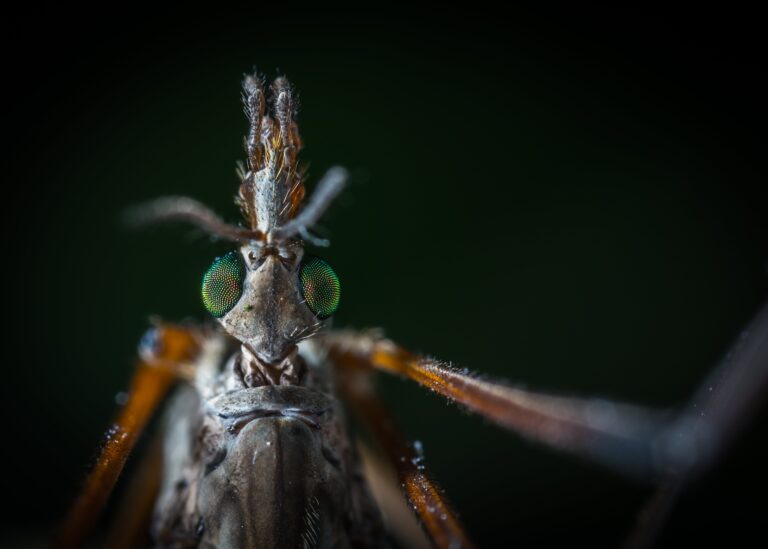
However, aphids and mealybugs aren’t the only tricksters in town. Fungal diseases, spurred on by overenthusiastic watering, can cast a shadow over the health of your Senecio kleiniiformis. Black sooty mold might coat the leaves, a sure sign of fungal shenanigans. Prevention remains your best defense, ensuring the soil dries out between waterings, thus denying fungi the damp abode they seek.
And let’s not forget the infamous spider mite, minuscule arachnids that weave webs of chaos across your plant. These tiny terrors create speckled leaves and fine webs, sucking the life out of your Senecio kleiniiformis like microscopic vampires. A vigilant gardener equipped with a magnifying glass can spot them early, and an invigorating shower from the hose can send them packing.
Armed with knowledge and vigilance, you can defend your Senecio kleiniiformis against the perils that lurk in the foliage. Keep a watchful eye, and your green companion will continue to stand proud, a spear-tipped testament to the resilience of nature and the determination of a dedicated plant parent.
Design and Display Ideas
Ready to level up your décor game with the charismatic Senecio Kleiniiformis? This distinct succulent, known for its spear-like foliage, makes for an edgy and stylish addition to any setting. Let’s dive into some real-life examples and tap into the world of aesthetic versatility that these succulents offer.
Modern Minimalism Meets Greenery
Imagine a pristine white windowsill basking in the afternoon glow, now add a row of Senecio Kleiniiformis potted in sleek geometric containers. Instant chic, right? This succulent’s artful presence can truly elevate a minimalist aesthetic, injecting life into an otherwise monochrome palette.
Boho Dreams with Textured Tapestries
For the bohemian hearts, couple your love for color and pattern with the understated elegance of Senecio Kleiniiformis. Display them in a hand-woven hanging planter alongside macrame decor. The contrasting textures create a visually engaging space that feels both earthy and dreamy.
Why not watch how these succulent beauties can transform a space? Get inspired with this video showcasing design ideas that incorporate Senecio Kleiniiformis.
Eclectic Corners Crafted with Care
Don’t shy away from mixing eras and elements when styling with Senecio Kleiniiformis. Pair it with Victorian lace, mid-century modern furnishings, or even edgy metal works. The key is cohesion through color or form, ensuring your succulent stands proud as the focal point of an eclectic vignette.
Office Spots Spruced with Spear Heads
Desks and bookshelves need not be dull. A small pot housing a Senecio Kleiniiformis can sit snugly among office accoutrements, offering a pop of natural beauty. The uplifting green of its leaves can provide a refreshing visual break, perfect for those long hours of focus and creativity.
With the right eye for design and a touch of creativity, Senecio Kleiniiformis can transform any space, providing daily doses of aesthetic pleasure and a refreshing ambiance. It’s not just about placing a plant; it’s about crafting an experience with nature as your muse.
Senecio Kleiniiformis and Environmental Benefits
The Senecio Kleiniiformis, affectionately nicknamed the Spear Head succulent, isn’t just a stunner with its spear-shaped leaves and understated elegance. This succulent quietly wields a remarkable power to positively impact our environment. Like little green warriors in the fight for a healthier planet, these plants offer a one-two punch in improving air quality and supporting biodiversity. Let’s explore this underdog’s superpowers, shall we?
When it comes to air quality, the Spear Head succulent is like having an unassuming, leafy air purifier in your home or garden. This plucky plant engages in a process known as phytoremediation, where it can absorb pollutants and volatile organic compounds from the air. Imagine this: while you’re going about your day, your Spear Head is silently scrubbing the air. It’s akin to a silent but dedicated janitor for the atmosphere. And the best part? It doesn’t ask for anything in return, save for a little water and sunlight.

But the Spear Head’s environmental contributions don’t stop there. When planted outdoors, these succulents become part of the local biodiversity tapestry. By adding green pockets to urban environments, they provide a haven for pollinators such as bees and butterflies. Not to mention, these plants are pretty resilient and can thrive in areas where other plants may falter, acting as a green anchor in the ecosystem. It’s providing a pitstop for some pollinators while also bolstering plant diversity.
Consider the real-life example of a city balcony transformed into a mini oasis with just a collection of Senecio Kleiniiformis. The presence of these Spear Heads not only brightens the space but also attracts the attention of curious birds and insects, adding life to a concrete backdrop. Contributing to the local ecology, the plants help urban areas to become more than just residential or commercial zones – they promote them to being active participants in environmental stewardship.
In essence, the humble Senecio Kleiniiformis is an environmental superhero in its own right. While it may not be as flashy as some other plants, its subtle contributions to improving our world are nothing short of remarkable. By simply existing, these succulents clean our air and enrich our ecosystems, making our planet a greener, more vibrant place to live.
Frequently Asked Questions
Have you found yourself marveling at the intriguing spearhead shape of the Senecio Kleiniiformis? If you’re keen to turn this succulent’s rigid yet graceful form into the showstopper of your plant collection, you’ve come to the right FAQ section! Let’s dive into some sizzling questions plant enthusiasts like you often ponder about this succulent beauty.
Care Tips for a Thriving Senecio Kleiniiformis
First things first, how do you pamper your Senecio Kleiniiformis so it flourishes? Simplicity is key! Imagine you’re in its native arid homeland—your Senecio craves bright sunlight but can do with a bit of shade, especially when the solar kisses become a tad too fiery. When it comes to watering, think of a desert downpour: infrequent but generous. Allow the soil to fully dry out before you unleash the rain again. Overwatering? That’s the fast lane to a succulent’s heartbreak, so keep it sparse and special.
Is Senecio Kleiniiformis Toxic?
Paw parents and those with curious toddlers often ask, “Is this pointy beauty going to stir up trouble if nibbled on?” Good news—while many succulents play the toxic card, your spearhead buddy is generally non-toxic. However, always practice caution and keep greenery out of reach of kids and pets. Each individual could react differently, and it’s better to play it safe than sorry.

Growth Patterns: From Sprout to Spear
Every plant has a story, a journey from a tiny sprout to its full glory. With the Senecio Kleiniiformis, patience is a virtue. It’s a slow grower, so don’t fret if you don’t see much action initially. Over time, given the right care, it’ll reward you with vigorous growth and can reach up to 18 inches tall! Picture a miniature forest of spearheads proudly standing in your living room—quite the sight, isn’t it?
Troubleshooting Tips for Common Issues
Is your Senecio throwing a tantrum with dropping leaves or lackluster growth? Don’t throw in the trowel just yet! Leaf drop could signal too much love (read: overwatering) or not enough light. Coax it back to happiness with a sunbath and a dial-back on the H2O. If the growth is as sluggish as a snail race, consider evaluating your feeding schedule. A little succulent food during the growing season could be just the pep talk your plant needs!
Remember, the journey with a Senecio Kleiniiformis is one of awareness, attentiveness, and a dash of plant intuition. Every gardener’s path is sprinkled with learnings and discoveries. Embrace them, and you’ll have a spearhead sidekick that’s not only surviving but thriving!
